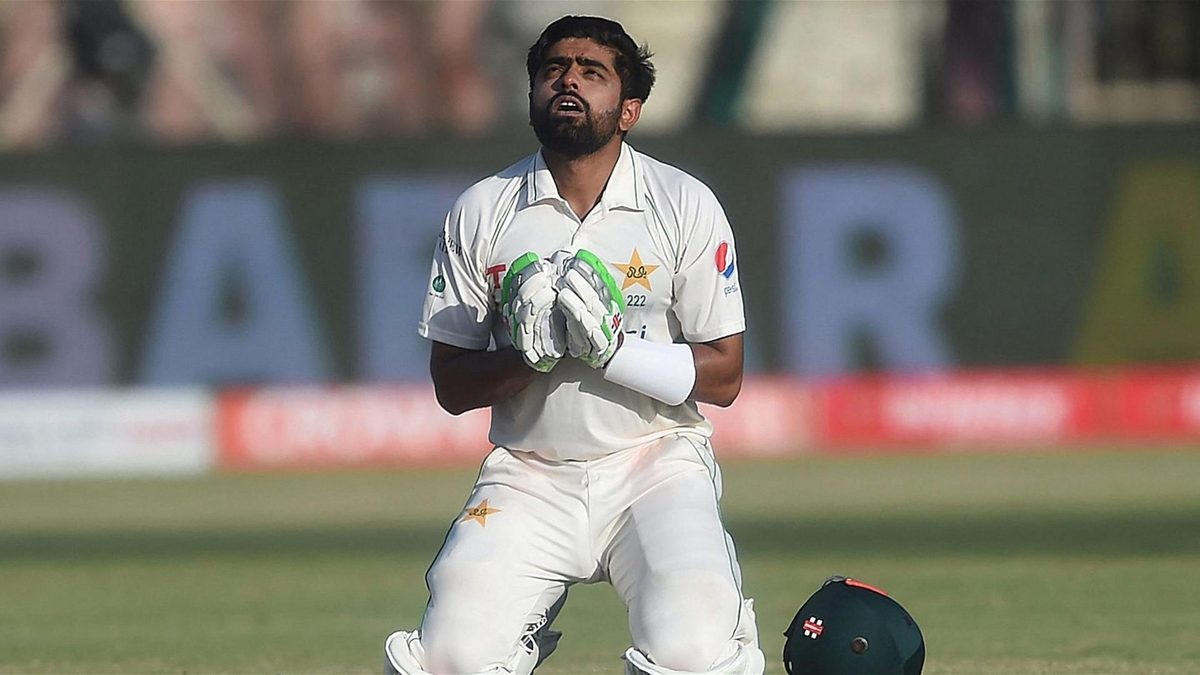
Pakistan’s incredible rearguard to save the second Test at Karachi against Australia stands as one of the most epic the game has ever seen.
Having been skittled for 148 in the first innings, Australia declared early on the fourth day leaving Pakistan needing 506 to win, which would have been the highest total ever made to win a Test match, or, as transpired, needing to bat out nearly two days to salvage a draw.
Already, this puts their effort into the record books. They kept out 171.4 overs in the fourth innings. Only once in Test history has a team batted for longer to secure a stalemate.
That came all the way back in 1939, and is something of an outlier, with the game being a timeless Test. With no restrictions on the length of the game – until England had to catch the boat home – and the pitch rolled between each day, neither side looked particularly intent on victory, although England’s eventual 654-5 did leave them only 42 runs shy of their target. Arguably, the unique nature of this contest should rule it from contention.
That would leave Karachi at the top for fourth-innings efforts, with Babar Azam as its chief architect. His 196 was the highest score in the fourth innings by a captain, outdoing Michael Atherton’s famous 185* at Johannesburg in 1995, though the England skipper’s effort was longer in terms of both time and balls faced. That pair are the only two fourth-innings efforts to last longer than 10 hours.
Abdullah Shafique and Mohammad Rizwan provided able supporting hands. The former continued his fine early start to his Test career, with his 96 a fourth fifty-plus score in seven innings, including a century. He now averages 73.16 after four Tests. Only two Pakistan batters – Taslim Arif and Javed Miandad – have scored more runs after seven innings.
For Rizwan, this confirmed his place as one of the pre-eminent all-format cricketers in the world. He became just the eighth wicketkeeper to ton up in the fourth innings, and the second from Pakistan, joining Moin Khan. He now averages 47.73 as a designated wicketkeeper in Test cricket. Among those with 1,000 runs, only AB de Villiers and Andy Flower average more.
Those batting heroics meant it was a long day in the field for Australia’s bowlers, and especially Mitchell Swepson, who was given an early introduction to the toils of Test cricket. He finished with figures of 0-156 in 53.4 overs. Only once has a debutant bowled more overs in an innings without reward – Bapu Nadkarni in 1955 – while only two debutants have had worse innings analyses – England’s Adil Rashid in 2015, and Pakistan’s Zafar Gohar in 2021.
However, while in terms of fourth innings efforts it might be hard to beat Pakistan’s here, there is a blockathon to outdo it. Against West Indies in 1958, Pakistan were asked to follow on 473 runs behind on a Test scheduled for six days. Their second innings began less than halfway through the third day, and only ended late on the sixth, with Hanif Mohammad batting for 15 and a half hours, or 970 minutes, for his 337. Pakistan faced a whopping 319 overs, and the game was saved. Mammoth.








